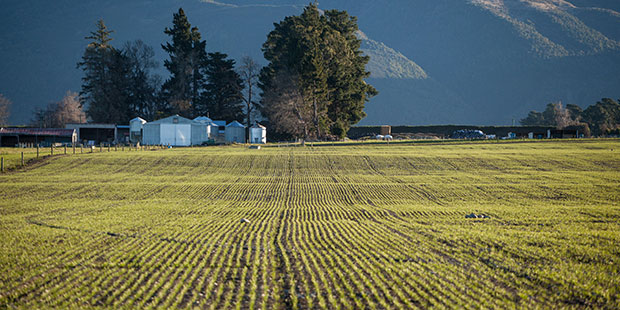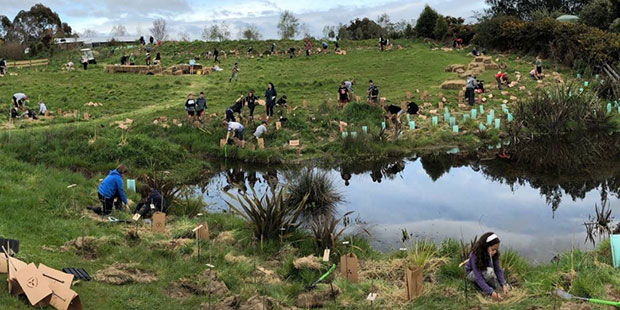"Porridge" can also help water quality
Oats - base of many a breakfast dish - also reduces nitrate leaching on farms.


A crop used in cooking porridge for Kiwi breakfast tables may also have a key environmental part to play on the country’s farming pastures.
The humble oat - which many turn into the warm breakfast dish from its processed forms of oatmeal or rolled oats - has been shown to be effective in reducing nitrate leaching.
A recently completed six-year research programme conducted on research sites and farms in Canterbury and Waikato revealed oats - also widely used for stock feed - are one of a number of crop options effective in reducing nitrogen leaching by as much as 30 per cent.

Cows eating Fodder Beet. Image / Supplied.
Cows eating Fodder Beet. Image / Supplied.
DairyNZ’s principal scientist, farm systems, Dr Ina Pinxterhuis, says the findings are “very significant” and may provide a pathway for the future as New Zealand farming continues to look for solutions to nitrogen leaching issues posed by grazing animals.
The DairyNZ-led Forages for Reduced Nitrate Leaching (FRNL) programme included the trialling of a number of catch crop options like oats as well as low-protein feed-crops such as fodder beet and pasture species like plantain and Italian ryegrass.
The research found oats reduce leaching when planted early in the winter season through an efficient uptake of water and nitrogen; other options trialled resulted resulted in less nitrogen consumed and excreted by animals or a lower nitrogen concentration in the animals’ urine.

Fodder Beat. Image / Supplied.
Fodder Beat. Image / Supplied.
Pinxterhuis says most of the farmers involved in the programme achieved reductions in nitrogen leaching, some as high as 30 per cent.
But she says: “I don’t think there is ever a silver bullet but we expect, in the future, more farmers will adopt the practices we trialled as they look to improve environmental outcomes on their land.”
Already this is happening with a different project involving another 30 farmers in the Hinds and Selwyn catchments in Canterbury, projects in Aparima in Southland and in the Tararua catchment in Whanganui-Manawatu, where a group of farmers are experimenting with the use of plantain.

Ina Pinxterhuis. Image / Supplied.
Ina Pinxterhuis. Image / Supplied.
Pinxterhuis says numerous farmer meetings have been held around the country to discuss the findings and are expected to continue as the research progresses.
“All of the options require farmers to learn how they work,” she says. “Every farm is different and it is up to the farmers to assess which options may be useful; it also comes down to what their preference is.
“When we started, the aim was to look at ways of reducing nitrogen leaching by 20 per cent. We showed that this can be achieved with the various options investigated.”

Image / Supplied.
Image / Supplied.
“Planting low-protein feed crops, such as fodder beet and pasture species like plantain and Italian ryegrass, result in less or diluted nitrogen excretion by animals and more nitrogen uptake from the soil,” she says. “Planting catch crops like oats helped use up residual soil nitrogen through plant growth.”
Pinxterhuis says the programme also looked at the implications of the use of forage crops on other farm management practices such as fertiliser input and pasture utilisation. Results show their use had no negative impact on feed supply or farm profits.

Image / Supplied
Image / Supplied
The primary source of nitrogen leaching in grazed pastures is through animal urine patches. Forage crops can reduce this by reducing the amount of nitrogen in the diet and therefore its concentration and amount in urine – or by increasing plant nitrogen uptake from the soil before it drains away. That can be achieved either by greater growth rates in the cool-high drainage season or by deeper root systems.
The FRNL programme was DairyNZ-led in collaboration with the Ministry of Business Innovation and Employment (MBIE), AgResearch, Plant and Food Research, Lincoln University, the Foundation for Arable Research and Manaaki Whenua-Landcare Research.
Meanwhile the FRNL catch crops trial at DairyNZ’s Scott Farm in Waikato – the farm used by DairyNZ for research on effective dairy farming systems – found that oats reduce nitrogen in the soil (at depths of 30 to 90cm) by up to 47 per cent when compared to Italian ryegrass.





